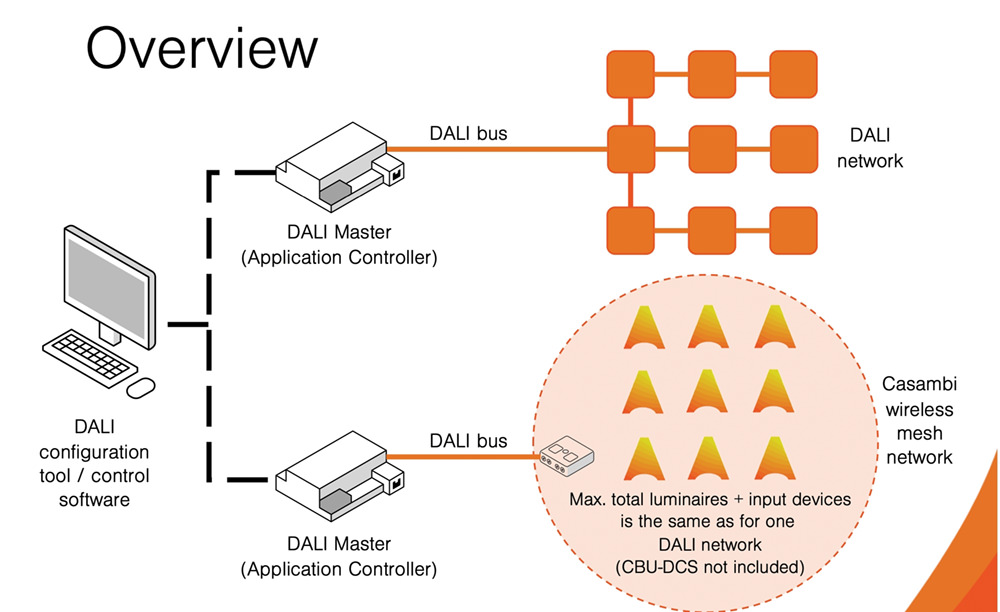Wireless lighting control systems are becoming increasingly popular in industrial and commercial settings. Two popular options are the Casambi and DALI (Digital Addressable Lighting Interface) systems. While both systems allow for advanced lighting control and management, there are some key differences between the two.
What is Casambi lighting control
Casambi solution is based on Bluetooth Low Energy, the state-of-the-art Bluetooth wireless technology and the only low power wireless technology in all modern smartphones and tablets, making it the only mainstream and future-proof low power radio technology. With Casambi you can build an easy-to-use lighting control to suit any space.
What is DALI lighting control?
DALI (Digital Addressable Lighting Interface ), is a data transfer protocol. DALI defines digital communication between a lighting appliance and a system device controller. DALI control system brings great flexibility to the lighting control. The owners of enterprises can design and adjust the corresponding lighting scheme according to their needs. This adjustment can still be used during the operation after the installation of lighting fixtures like LED high bay light and LED linear high bay light without any changes to the circuit.
Learn how LED high bay lights work with DALI in factory.
Difference between Casambi and DALI
Communication Protocol
One of the main differences between Casambi and DALI is the communication protocol used. Casambi uses Bluetooth Low Energy (BLE) technology, while DALI uses a wired digital communication protocol. This means that Casambi can be used in retrofit applications without the need for additional wiring, while DALI requires wiring for each fixture.

Scalability
Another difference between the two systems is scalability. While both systems allow for individual control of each fixture, Casambi’s mesh network allows for greater scalability and flexibility. This means that the system can be easily expanded or reconfigured as needed, without the need for additional wiring or infrastructure. In contrast, DALI requires separate wiring for each fixture, which can make expansion more difficult and time-consuming.
Ease of Use
Casambi is designed for ease of use, with a user-friendly app that can be installed on a smartphone or tablet. The app allows users to control lighting levels, set schedules, and create custom lighting scenes, all from their mobile devices. DALI, on the other hand, requires more technical expertise to install and program.
Compatibility
Casambi is compatible with a wide range of LED drivers and fixtures, while DALI is limited to fixtures and drivers that are specifically designed to be compatible with the DALI protocol.
Energy Efficiency
Both systems are designed to be energy-efficient, with the ability to control lighting levels and set schedules to optimize energy usage. However, Casambi’s advanced energy monitoring and analytics capabilities allow users to track and analyze their energy usage and identify opportunities for optimization and cost savings.
In conclusion, both Casambi and DALI are effective lighting control systems, but they have some key differences in communication protocol, scalability, ease of use, compatibility, and energy efficiency. When choosing between the two, it's important to consider the specific needs and requirements of your lighting application, as well as your budget and technical expertise. Make sure to contact us if you have any needs.












